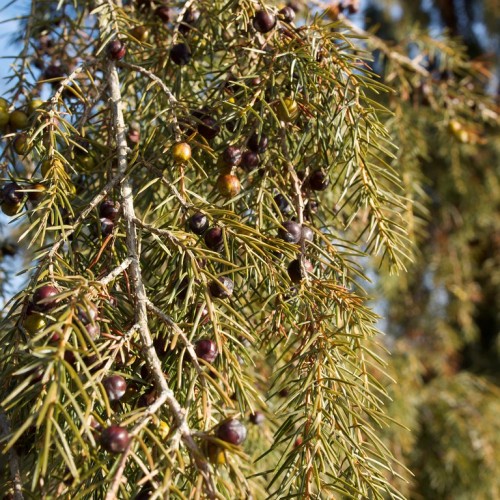
Chinese juniper
Juniperus chinensis 'Fairview'
Cycle:
Perennial
Watering:
Average
Hardiness Zone:
4 - 9
Flowers:
Flowers
Sun:
Full sun
Cones:
Yes
Leaf:
Yes
Growth Rate:
Low
Maintenance:
Low
Drought Tolerant:
Yes
Salt Tolerant:
Yes
Care Level:
Medium
watering
When watering Chinese juniper, it is best to water deeply and infrequently. Chinese juniper should be watered once every 2-3 weeks during the warmer months, allowing the soil to dry out between waterings. In the winter, reduce watering to every 4-6 weeks. Be sure to avoid overhead watering, as this could lead to fungal diseases. In addition to deep watering, mulch around the base of the plant can help retain extra moisture.
sunlight
Chinese juniper (Juniperus chinensis 'Fairview') requires full sun to partial shade exposure to perform its best. This species of juniper thrives in sunny locations where it will receive between 4 to 8 hours of sunlight each day. It is important to note that too much sun in dry bed locations can lead to scorched foliage. For Chinese juniper planted in sunny locations, it is recommend that direct sun exposure should occur during the morning and early afternoon hours. By providing sun exposure to the Chinese juniper during the morning and early afternoon hours, this helps the plant to avoid the intense heat that can occur during the middle of the day when temperatures rise and the sun is its highest and most direct.
pruning
Pruning Chinese juniper (Juniperus chinensis 'Fairview') should occur when growth has slowed in winter months. Pruning should be done conservatively, removing a maximum of 1 third of the plant over several months to reduce shock to the plant. Additionally, it is best to prune when the plant is healthy and free of disease or insect damage. Pruning should be done in early spring, as the plant begins to actively grow. This is the best time to collect clippings and open up the tree to promote air circulation and sunlight penetration. Shaping and removal of dead, diseased or injured wood should be done at this time also, while more drastic pruning can occur in late spring or summer months.
